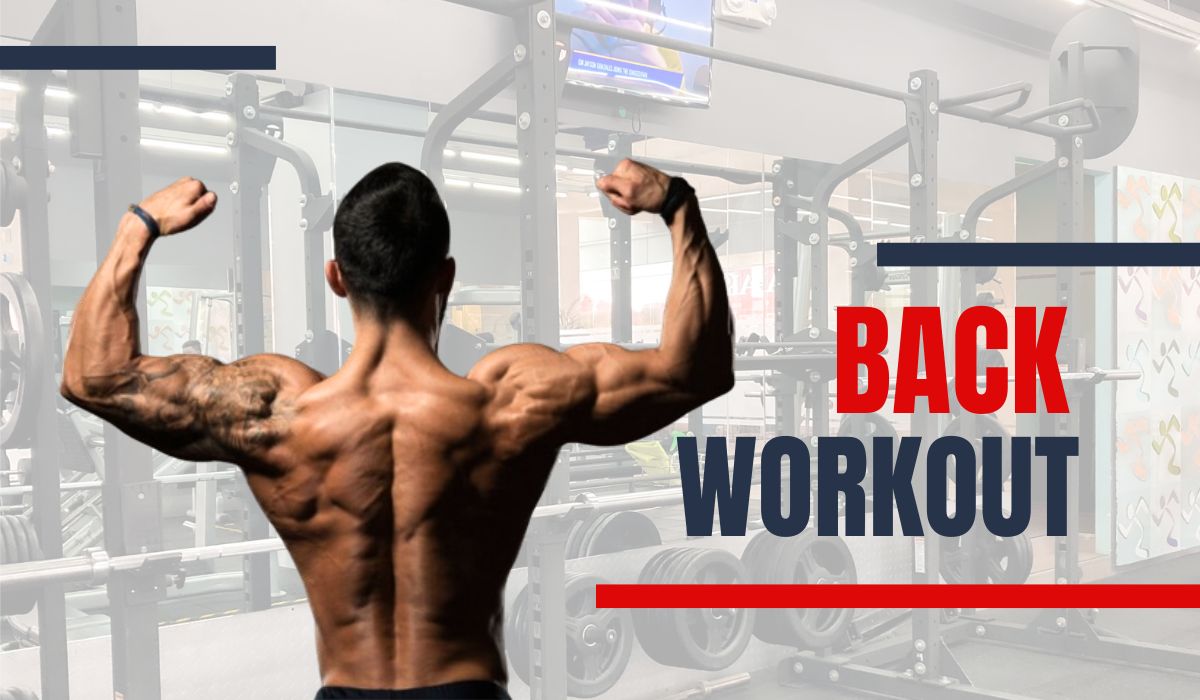Barbell Bent-Over Row
Bent over rows is one of the best back-building exercises you can do. You also get lower body activation because you’ll maintain a stable position throughout the exercise. Inclined rows increase strength and muscle mass in your upper and middle back. Development of upper and middle back muscles transfers to other movements, especially pull-ups and chin-ups.
Upper back strength is important for handling the bar when it comes to power cleans and snatches, as well as maintaining your grip on the bar during heavy deadlifts. Place your feet under the barbell as if you are preparing for a deadlift. For this lift ideally grip the bar with a double overhand grip, with your hands shoulder-width apart and palms facing down. Think about squeezing your shoulder blades together.
Pull the barbell toward your torso and try to thump it over your sternum. Your elbows should go back and point toward the sky behind you. Palms should remain downwards.
Single-Arm Dumbbell Row
This is a classic movement that will never go out of style: These are a mainstay of bodybuilding routines and a great addition to CrossFit, weightlifting, and powerlifting routines. A well-executed single-arm row is one of the best back exercises for hypertrophy, i.e. muscle growth.
What’s more, single-arm rows can reveal muscle imbalances And can fix them. Shift your weight so that the bench can support you. Place your left foot and hold the dumbbell with your left hand. Tighten your core so your back remains flat. Pull the dumbbells toward your body, making sure the row is backward, not upward — pull through your back, not your shoulders or traps. It may be helpful to think about starting a lawn mower for yourself. You should feel the most tension in your lats and the muscles between the shoulder blades.
Dumbbell Bent-Over Row
Which can lead to more recruitment of muscle fibers. In other words, your muscles have to work harder to lift the same amount of weight, and this challenge can lead to muscle hypertrophy. Choose two dumbbells of similar weight and place them on the floor a couple of feet apart. Stand between dumbbells; You’ll want to keep your stance shoulder-width apart. Grab dumbbells and hold them at your sides with your arms extended. You can also incorporate kettlebells for this exercise.
Seated Cable Row
This exercise isn’t best suited for a home gym, as most home gym owners don’t have the space for a full-out cable machine or the money for the sophisticated machine. Are not. (Most home gym owners are more likely to add a lat pull-down power rack attachment to an existing rig.) However, we thought the cable row is still worth a mention because it’s a great back exercise.
Benefits of Cable Rows The best thing about cable rows is that you can isolate your back muscles since they are seated. Unlike other back exercises that require you to involve other muscles – such as your entire lower body – this one is all about the back. Pull the handle toward you in a straight line, tucking your sternum. Squeeze to ensure complete muscle contraction. You should feel this exercise in your upper and middle back and maybe a little in your rear deltoids.
Lat Pull-Downs
If you’re using resistance bands, you’ll loop them around a power rack and sit on the floor. Lat pull-downs strengthen and shape the latissimus dorsi – the long muscle that runs from the back of your rib cage to your armpits. They run from just below the hip bone to the back of your hip bone. I like to call them your “pull-up muscles.” However, because the lat pull-down is performed with a cable and you are seated for the exercise, you can lift much more weight than you possibly could on a pull-up.














